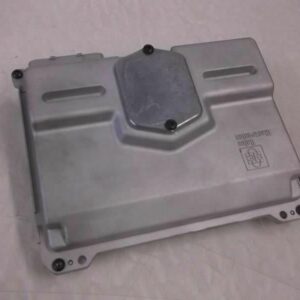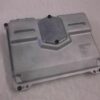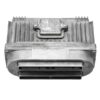Restore Your Vehicle’s Performance and Reliability
Is your 1996 Chevrolet Beretta, or another compatible GM vehicle, suffering from frustrating issues like stalling, rough idling, a persistent Check Engine Light, or a complete no-start condition? In my 20+ years of experience, these are classic signs of a failing Powertrain Control Module (PCM), the computer that acts as your engine’s brain. When it falters, everything from fuel delivery to spark timing can become erratic. This isn’t just an annoyance; it affects your fuel economy, emissions, and overall drivability.
This replacement 1996 Beretta PCM is the definitive solution. We take the guesswork and high costs out of the repair. Before this module ever ships, we professionally program it with the latest GM software updates, using the specific Vehicle Identification Number (VIN) from your car. This means it arrives at your door ready for a straightforward installation, with no need for an expensive trip to the dealership for programming. It’s a direct-fit replacement for part numbers 16215830 and 16231851, designed to restore your vehicle’s original operational parameters.
From the Diagnostic Bay: The Intermittent No-Start Mystery
I remember a 1996 Chevy Cavalier that came into my shop a few years back. The owner was at his wit’s end. The car would start fine for a week, then refuse to start for a day, with no rhyme or reason. The battery was new, the starter was good, and there were no consistent trouble codes. After checking all the wiring, I hooked up my scope to the PCM’s power and ground circuits. I noticed that during the no-start events, the 5-volt reference signal from the PCM was dropping out. This is a tell-tale sign of an internal computer failure, often caused by heat cycles and aging solder joints. We swapped in a pre-programmed PCM, and the car fired up instantly. The customer called a month later to say the problem never returned. It’s a perfect example of how a faulty computer can create baffling symptoms.
Is Your GM Vehicle Showing These Red Flags?
- ✔ Unexplained Check Engine Light illumination
- ✔ Engine stalling, sputtering, or hesitating during acceleration
- ✔ Complete no-start or difficult starting conditions
- ✔ Noticeable decrease in fuel mileage
- ✔ Failure to pass state emissions inspections
- ✔ Diagnostic trouble codes (DTCs) related to internal module failure, such as P0601, P0605, or U-series communication codes
- ✔ Harsh or erratic automatic transmission shifting
A Straightforward Guide to Installation
- ✔ Safety First: Always disconnect the negative terminal from your vehicle’s battery and wait 10-15 minutes for any residual power to discharge.
- ✔ Locate the PCM: On most of these GM models, the PCM is located in the engine bay, often on the driver’s side firewall or near the air filter housing.
- ✔ Disconnect Connectors: Carefully unclip the wiring harness connectors from the old PCM. These connectors have locking tabs that need to be released before pulling. Do not force them.
- ✔ Remove the Old Module: Unbolt the old PCM from its mounting bracket. Keep the hardware, as you may need to reuse it.
- ✔ Install the New PCM: Mount your new, pre-programmed PCM onto the bracket and secure it. Reconnect the wiring harnesses, ensuring they click firmly into place.
- ✔ Reconnect Battery: Reattach the negative battery terminal. The vehicle is now ready to start. It may take a few drive cycles for all systems to fully recalibrate.
Verified Vehicle Compatibility
This engine control module is a guaranteed fit for the following 1996 models. Please confirm your vehicle and engine option are listed below.
- 1996 Buick Century: with 2.2L (4-134) Engine
- 1996 Buick Skylark: with 2.4L (4-146) Engine
- 1996 Chevrolet Beretta: with 2.2L (4-134) Engine
- 1996 Chevrolet Cavalier: All Engines
- 1996 Chevrolet Corsica: with 2.2L (4-134) Engine
- 1996 Chevrolet S10 / GMC Sonoma: with 2.2L (4-134) Engine
- 1996 Oldsmobile Achieva: with 2.4L (4-146) Engine
- 1996 Oldsmobile Ciera: with 2.2L (4-134) Engine
- 1996 Pontiac Grand Am: with 2.4L (4-146) Engine
- 1996 Pontiac Sunfire: All Engines
Frequently Asked Questions
How does the VIN programming work?
After you place your order, you will need to provide us with your vehicle’s 17-digit VIN. We use this number to load the correct, manufacturer-approved software for your specific vehicle configuration. This ensures perfect compatibility and function right out of the box.
Will this fix my Check Engine Light?
If the Check Engine Light is on due to an internal fault within the original PCM (like code P0601), then yes, this replacement module will resolve the issue. If the light is on for another reason (e.g., a bad oxygen sensor), that separate issue will still need to be addressed.
Is this part difficult to install for a DIYer?
Not at all. The physical installation is typically very simple, involving basic hand tools to unbolt the old unit and install the new one. Since we handle all the programming, it’s a true plug-and-play repair, saving you hundreds in labor and programming fees.
What is the difference between a PCM and an ECM?
The terms are often used interchangeably. ECM stands for Engine Control Module, while PCM means Powertrain Control Module. A PCM is a more advanced ECM that typically controls both the engine and the transmission functions, which is common in vehicles from this era.
Do I need to perform a security relearn procedure?
For many GM vehicles of this generation, a simple security relearn procedure may be necessary after installation. It’s a straightforward process that usually involves cycling the key in the ignition and can be done in your driveway in about 30 minutes. Instructions are widely available online or in service manuals.



